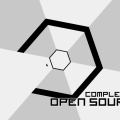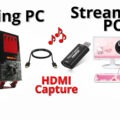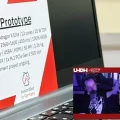Winamp is finally opening the source! Nvidia decides to play nice with Wayland, official m.2 HAT for the RasPi 5, and benchmarking your SSD like a Windows user.
Listen:
Subscribe Google Podcasts | Spotify | Apple | Stitcher | TuneIn | RSS | More
Timestamps:
00:00 Intro
03:21 Raspberry Pi IPO
04:08 Firefox opt-out data collection
09:38 Kernel 6.9 is nice
13:40 Snapdragon X Elite Linux support
17:38 Pi powered offline voice assistant
Winamp llama open
https://about.winamp.com/press/article/winamp-open-source-code
- Winamp laid off the skeleton crew maintaining Winamp.
- Going to let the community take over maintenance.
- Twenty years too late for it to possibly matter, but it’s still nice to see.
- They provide a very specific future date for this, and avoided using the term “open source”.
- Remember WinAmp, the beloved media player that came out in April in 1997 on Windows?
- Well, the Llama Group announced it will be open sourcing WinAmp on September 24th, due to budget constraints and company reorganization.
- Alexandre Saboundjian, CEO of Winamp talks about what they will be focusing on in the future:
- “This is a decision that will delight millions of users around the world. Our focus will be on new mobile players and other platforms. We will be releasing a new mobile player at the beginning of July. Still, we don’t want to forget the tens of millions of users who use the software on Windows and will benefit from thousands of developers’ experience and creativity.”
- But now that WinAmp is being open sourced, not only is it possible that we can we have our own WinAmp player for Linux, but we can see that code integrated into many audio players on Linux, including XMMS and Audacious, and they can have all of WinAmps functionality, and support all of its audio and visual plugins!
- Granted, a new media player on the desktop may not be the most exciting for some people, but this one you can create your own skins and themes for!
Nvidia 555 Beta
https://www.nvidia.com/Download/driverResults.aspx/224751/en-us/
- Gather around kids, it’s time to celebrate Nvidia doing a good.
- The NVIDIA 555 beta is ready for testing and it’s going to make some of you rather happy.
- 555 comes with Explicit Sync for the Wayland crowd. It should sort your freezes and jitters.
- On top of that it now uses GSP firmware when available by default.
- New option to install the MIT/GPL kernel modules in the installer.
- And support for using EGL instead of GLX for Nvidia Frame Buffer Capture.
- By all accounts the Wayland bits all make with the working.
- Plenty of reports of everything justworks ™ are popping up.
- Plenty of other fixes in the release notes but those are the ones I’m excited about.
- I installed it yesterday on Debian 12 and haven’t run into any issues, yet.
- Maybe this will inspire some of you to learn how to install drivers on Linux.
Kdismark
https://github.com/JonMagon/KDiskMark
- Traditionally, if you wanted to measure disk speed on Linux you break out hdparm and look up the moon glyphs needed for the tests.
- Or you break out Gnome disks and attempt to get something usable by punching in realistic test parameters.
- But what if you want simple one click goodness?
- Came across this while looking for benchmark tools that could output numbers Windows users could understand.
- Enter KDiskMark. A tool you might already know about but if you don’t, it could be what you’re looking for.
- Even works on mounted drives with no additional fuss.
- Plenty of synthetic tests to choose from.
- Ships with Debian.
- I’ve never looked for a GUI tool but I’m glad I came across this when I needed one.
- This tool is classic, I ran across it in 2020, and it is very similar to CrystalDiskMark on Windows.
- It doesn’t install the KDE dependencies like the name might imply, so it is small and compact and easily installable on any window manager.
Slice of Pi
M.2 HAT
https://www.raspberrypi.com/news/m-2-hat-on-sale-now-for-12/
- Are you in the market for a $12 hat?
- Tophat, baseball hat, Pi hat?
- Yes, this is the kind of hat you put on a Pi.
- Single-lane PCIe 2.0 interface (500 MB/s peak transfer rate)
- 2230 or 2242 form factor
- 3A to connected M.2 devices
- Uses the derpy little ribbon cable that I dislike.
- Compatible with the Raspberry Pi 5 Active Cooler.
- Schematics are available.
- Have you been patiently waiting, like myself, to use a speedy NVMe drive with your Raspberry Pi 5?
- Well, your wait is over, and the highly anticipated official Raspberry Pi 5 M.2 HAT+ is now available!
- The Raspberry Pi 5 M.2 HAT+ will let you connect an NVMe M.2 SSD drive, or an AI accelerator to your Raspberry Pi 5’s PCIe 2.0 interface.
- The Hat supports up to 500 MB per second both read and write, and is available for only $12 dollars!
- And here is something really wonderful that Raspberry Pi states on their blog:
- “If your Raspberry Pi 5 has up-to-date firmware, and an M.2 HAT+ attached, an installed PCIe device will be probed at power on and, if it’s an NVMe drive, it will be available as a boot source.”
- Over at CanaKit you can buy the Raspberry Pi 5 M.2 HAT for $12, or included with an 512GB NVMe SSD for $79.95 or an 1TB NVMe SSD for $119.95.











